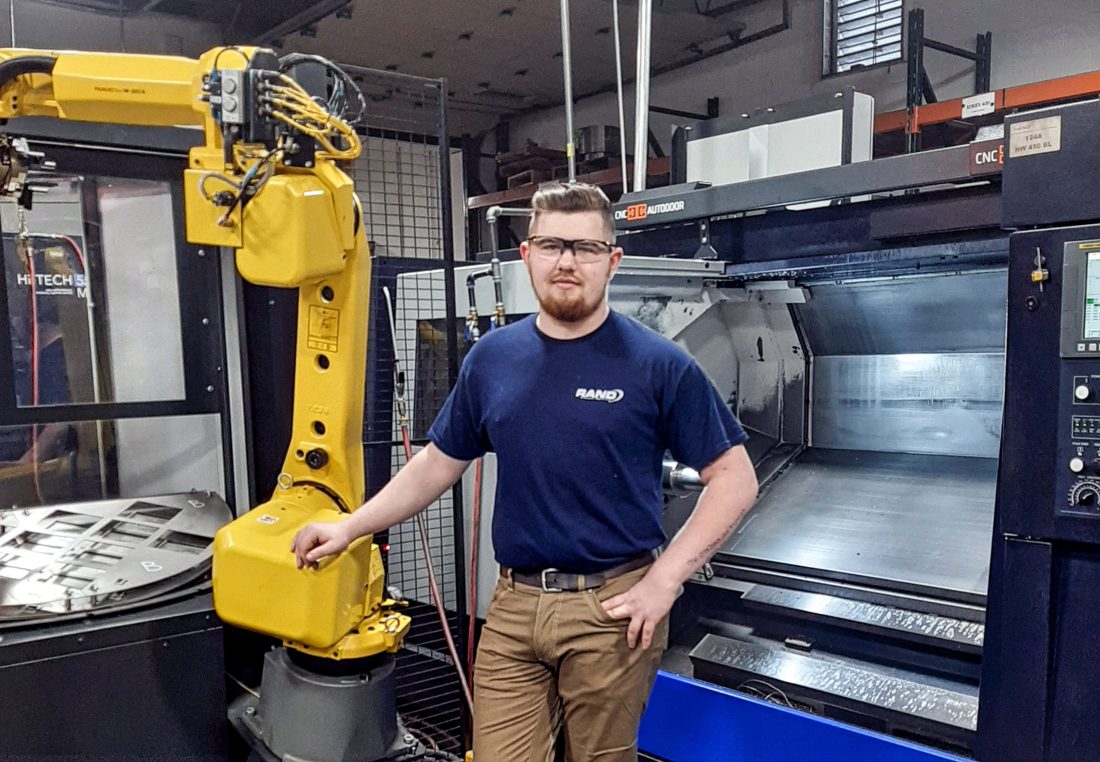Pandemic does not slow P-TECH program
On the right path

Submitted photo Garrett Sliwinski of Forestville is pictured job shadowing at Ring Precision Components in Jamestown during his junior year at WNY P-TECH in Dunkirk.
While the majority of area schools have been forced to make significant adjustments to distance learning during the COVID-19 pandemic, those attending Career P-TECH Academy through BOCES have had to absorb fewer changes.
P-TECH, which boasts a student body of 100 drawn from 17 area school districts, has had the benefit of lower class sizes and digital learning experience on its side.
The result has been a continued focus on offering area students opportunities to develop real-world, hands-on skills.
“We’re actually fortunate that we’ve been able to be in-person, face-to-face every day since Oct. 16. just because of the social distancing guidelines and the space that we have in our building and our enrollment, it allows us to do that safely,” said P-TECH principal William Smock. “I think that we were probably one of the schools that was the most prepared for any kind of remote learning last year during the pandemic, because our kids are so tech-based. We have one-to-one technology, so every student in our building has a Chromebook assigned to them. Some students have virtual welders so that we can continue on with the hands-on learning.”
P-TECH students enter one of three manufacturing-based learning tracks, pursuing mechanical technology design, welding or machine tooling in addition to spending time shadowing employees at local businesses as they prepare to enter the workforce.

Submitted Photo Joseph Schwartz of Southwestern is pictured working at Rand Machine Products during his senior year at WNY P-TECH. Joe has since moved on to Universal Tooling Corporation in Gerry.
One of the changes this year has been with that last area.
“The big changes for us this year, we’ve limited the amount of students leaving the building and going out to manufacturing, which that is a big piece of our program. That familiarity with manufacturing and business,” Smock said.
During the creation of P-TECH through a grant written in 2014, administrators looked at areas of the workforce that were likely to be in high demand moving forward.
They then designed educational programs that would help give the next generation of manufacturers the tools they need during their middle and high school years.
“We looked at what the workforce deficiencies were going to be projected over the next 10 years when we were writing the grant,” Smock said. “These pathways align to exactly where those deficiencies are going to be so we are creating the pipeline for backfilling. So when Baby Boomers and folks are looking to retire, that we can fill those job vacancies as they open up.”
Over the span of several decades, the United States has witnessed a combination of economic trends and educational trends, including the proliferation of student debt from private universities, underemployment and unemployment for new graduates, and the flight of manufacturing overseas.
P-TECH students are often set up on a track that appears to offer solutions to some of these issues.
“When I was 17-18 years old I was slinging pizzas,” said Mike Rukavina, Erie 2-BOCES public relations specialist. “There’s nothing wrong with working at a pizzeria while in high school, but it always amazes me to see P-TECH students finding jobs in the manufacturing industry working alongside 40, 50, sometimes 60-year-old men and women who have made that line of work a career. There’s an added sense of maturity in P-TECH students who, at such a young age, are finding themselves already working in a field they’re passionate about. They are so far ahead of the game before they even leave this program.”
- Submitted photo Garrett Sliwinski of Forestville is pictured job shadowing at Ring Precision Components in Jamestown during his junior year at WNY P-TECH in Dunkirk.
- Submitted Photo Joseph Schwartz of Southwestern is pictured working at Rand Machine Products during his senior year at WNY P-TECH. Joe has since moved on to Universal Tooling Corporation in Gerry.







